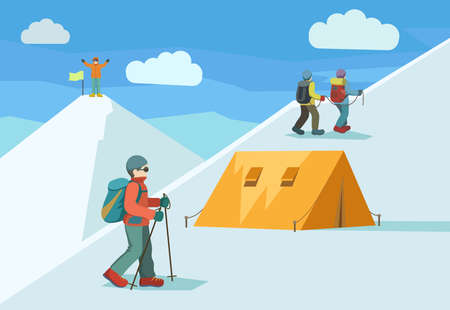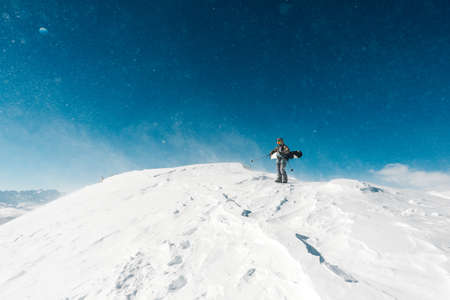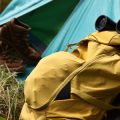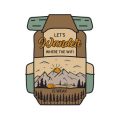1. Understanding Hydration Needs in Hot Weather
When the sun’s blazing and temps start climbing, hitting the trail can quickly turn into a sweaty adventure. For hikers in the U.S., especially during summer or in hot regions like Arizona or California, understanding how much water your body needs is key to staying safe and comfortable outdoors.
How Heat Affects Your Body’s Water Needs
When you’re hiking in high temperatures, your body works overtime to keep you cool. Sweat is your natural air conditioner—but it comes at a cost. As you sweat more, you lose not only water but also important electrolytes like sodium and potassium. If you don’t replace those fluids, dehydration can sneak up fast and put a real damper on your adventure.
Why Staying Hydrated Is So Important
Dehydration isn’t just about feeling thirsty. It can lead to headaches, fatigue, muscle cramps, confusion, and even heat exhaustion or heat stroke—serious conditions that can cut any hike short. That’s why knowing your hydration needs before you hit the trail matters so much.
Factors That Affect How Much Water You Need
| Factor | How It Impacts Hydration |
|---|---|
| Temperature | Higher temps mean you sweat more and need extra fluids. |
| Humidity | High humidity slows sweat evaporation, making it harder to cool off. |
| Hike Intensity & Duration | The longer and harder you hike, the more water you’ll need. |
| Your Body Size | Bigger folks tend to need more fluids than smaller ones. |
| Pace & Fitness Level | If you’re pushing hard or just starting out, you may lose water faster. |
On average, most American hiking experts recommend drinking about half a liter (about 17 ounces) of water per hour when hiking in moderate heat. In extreme conditions or during strenuous activity, that amount might double. Always listen to your body—if you’re thirsty or your mouth feels dry, it’s time for a drink.
2. Calculating Your Water Intake on the Trail
Understanding Your Hydration Needs
Figuring out how much water to bring on a hike can feel tricky, especially when temperatures soar. There’s no one-size-fits-all answer because every hiker—and every trail—is different. The amount of water you need depends on several key factors: the length and difficulty of your hike, how much you sweat, and the weather conditions.
Key Factors to Consider
- Hike Length & Intensity: Longer and more strenuous hikes mean you’ll need more water.
- Personal Sweat Rate: Some folks sweat more than others, especially in the heat or when hiking uphill with a heavy pack.
- Temperature & Humidity: Hotter, sunnier days will make you lose fluids faster, and high humidity can make sweating less effective at cooling you down.
Estimating How Much Water to Bring
A good rule of thumb is to drink about half a liter (17 ounces) of water per hour of moderate activity in average conditions. In hotter or more challenging conditions, this can go up to 1 liter (34 ounces) per hour.
| Condition | Recommended Water Intake (per hour) |
|---|---|
| Cool/Moderate Weather, Easy Pace | 0.5 liters (17 oz) |
| Hot Weather, Moderate Pace | 0.75 liters (25 oz) |
| Very Hot/Strenuous Hike | 1 liter (34 oz) |
How to Personalize Your Estimate
If you want a more accurate number, try weighing yourself before and after a training hike. For every pound lost, that’s roughly 16 ounces of water you’ve sweated out. Don’t forget to factor in any water you drank along the way.
Sweat Rate Calculator Example
- Step 1: Weigh yourself before your hike.
- Step 2: Track how much water you drink during the hike.
- Step 3: Weigh yourself after the hike.
- Step 4: Subtract your post-hike weight from your pre-hike weight—add the amount of water you drank. This total is your sweat loss for that hike!
Packing Smart: Don’t Overdo It
You don’t want to haul extra weight if you don’t have to, but running out of water is dangerous. If there are reliable refill sources on your route, you can plan to carry less and filter or treat water as needed. Always bring a little extra just in case—it’s better to have it and not need it than the other way around!

3. Signs of Dehydration and Heat Illness
Early Warning Signs to Watch For
Staying hydrated is crucial for any hiker, especially when temperatures climb. Knowing the early signs of dehydration and heat-related illnesses can help you take action before things get serious. Heres what you should look out for on the trail:
| Dehydration Signs | Heat Exhaustion Signs |
|---|---|
| Dry mouth or sticky feeling | Heavy sweating |
| Headache | Nausea or vomiting |
| Dizziness or lightheadedness | Muscle cramps |
| Dark yellow urine or peeing less often | Weakness or fatigue |
| Irritability or confusion | Pale, cool, clammy skin |
| Thirst (feeling very thirsty means you’re already behind!) | Dizziness or fainting spells |
What To Do If You Notice Symptoms While Hiking
- Stop and Rest: Find shade or a cooler area to sit down.
- Hydrate: Sip water slowly—don’t chug it all at once. If you have electrolyte tablets or drinks, use them.
- Cool Down: Loosen tight clothing, remove hats, and fan yourself. Place a wet bandana or cloth on your neck and wrists if you can.
- Avoid Further Exertion: Don’t push on until you’re feeling better; pushing through can lead to more serious problems.
- If Symptoms Worsen: If someone starts acting confused, stops sweating, has trouble walking, or faints, seek emergency help right away. In the U.S., call 911 if you have cell service.
Pro Tip:
The best way to avoid dehydration and heat illness is prevention—drink regularly, rest in the shade, and listen to your body. Remember: if you’re feeling off, don’t ignore it! Taking early action can keep your hike safe and enjoyable.
4. Smart Hydration Gear and Packing Tips
Hydration Packs: Hands-Free Convenience
For American hikers, hydration packs like the CamelBak or Osprey models are a game-changer. These backpacks have built-in water reservoirs (bladders) with drinking tubes, letting you sip while on the move—no need to stop or fumble for a bottle. Theyre especially popular in hot climates or on longer hikes when easy access to water is crucial.
Filtered Water Bottles: Drink Safely Anywhere
If your trail crosses streams or lakes, filtered bottles such as LifeStraw and Sawyer Squeeze let you refill and purify water instantly. This means you can carry less weight and still have safe water available. Many American hikers love these options for backcountry adventures where clean water sources arent guaranteed.
Electrolyte Supplements: Boost Your Hydration
Its not just about water—electrolytes matter too, especially in the heat. Popular U.S. brands like Nuun, Liquid I.V., and Gatorade Endurance offer tablets or powders that dissolve in water, helping replace lost sodium, potassium, and other key minerals. These supplements are lightweight and fit easily into any pack.
Quick Comparison of Popular American Hydration Gear
| Gear Type | Popular Brands | Main Benefits | Best Use |
|---|---|---|---|
| Hydration Pack | CamelBak, Osprey | Hands-free sipping, large capacity (2-3L) | Long hikes, hot weather |
| Filtered Bottle/Straw | LifeStraw, Sawyer Squeeze | Purifies natural water sources, lightweight | Backcountry, uncertain water sources |
| Electrolyte Supplements | Nuun, Liquid I.V., Gatorade Endurance | Replaces lost minerals, easy to pack | Hot days, heavy sweating |
Packing Tips for Efficient Hydration
- Plan ahead: Check your route for water sources so you know how much to bring vs. refill.
- Balance weight: Start with enough water for the first leg; use filters if refilling is possible later.
- Pace yourself: Sip regularly instead of gulping large amounts at once.
- Add electrolytes: Use supplements during long or sweaty hikes to prevent cramps and fatigue.
- Keep gear accessible: Store bottles or hydration tubes where you can reach them without stopping.
With smart gear choices and a bit of planning, staying hydrated on American trails—even in peak summer heat—can be safe and hassle-free!
5. Pro Tips for Water Sources and Trail Safety
Finding Water in the Backcountry
When hiking in the American backcountry, especially during hot summer months, knowing where and how to find water is crucial. Here are some insider tips:
- Scout Your Route: Use trail apps like AllTrails or Gaia GPS to identify streams, lakes, and springs along your route.
- Look for Natural Indicators: Dense green vegetation, animal tracks, and dips in the landscape often point toward water sources.
- Ask Locals or Rangers: Before hitting the trail, check with park rangers or local hikers for current water availability—droughts can dry up normally reliable streams.
Treating Water: Stay Safe from Bugs & Germs
No matter how clear a creek looks, always treat your water before drinking. Here are popular methods used by American hikers:
| Treatment Method | Pros | Cons |
|---|---|---|
| Squeeze Filters (e.g., Sawyer Squeeze) | Lightweight, removes bacteria & protozoa | Can clog if water is silty |
| Chemical Tablets (AquaMira, iodine) | Very portable, kills most pathogens | Takes 30+ minutes, chemical taste |
| UV Light (SteriPEN) | Fast, easy to use | Batteries required, not for murky water |
| Boiling Water | Kills all germs including viruses | Takes time & fuel; need a stove/pot |
Pro Tip:
If you’re in bear country or remote areas where wildlife is active near water sources, collect water upstream from campsites and always store your clean and dirty gear separately.
Best Practices for Staying Safe on Summer Hikes
- Drink Early & Often: Don’t wait until you’re thirsty—sip small amounts regularly to stay hydrated.
- Avoid Peak Heat: Plan to hike early in the morning or later in the afternoon. The midday sun can be brutal, especially in places like California’s Sierra Nevada or Utah’s deserts.
- Pace Yourself: It’s okay to slow down when it’s hot. Overexertion increases risk of heat exhaustion and dehydration.
- Cowboy Check-In: Let someone know your hiking plan and estimated return time—even on popular trails.
- Know the Signs: Learn symptoms of dehydration and heat illness: headache, confusion, dark urine, dizziness. If you notice these signs, stop and hydrate immediately.
- Electrolytes Matter: Bring electrolyte tablets or powder (like Nuun or Liquid I.V.) to add to your water. Sweating causes you to lose more than just H2O!
Packing Checklist for Hydration Safety:
- Main water bottle or hydration bladder (at least 2-3 liters capacity)
- Backup soft flask or collapsible bottle
- Treatment method (filter/tablets/boiling kit)
- Electrolyte supplements
- Sunscreen and hat for shade breaks near water sources
The right strategies help you stay safe and healthy on every summer hike—so fill up smart, stay cool, and enjoy those epic American trails!


